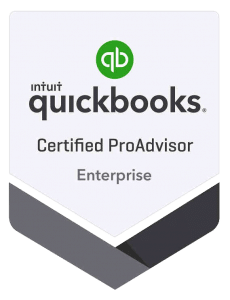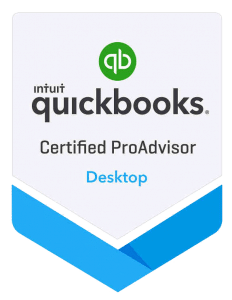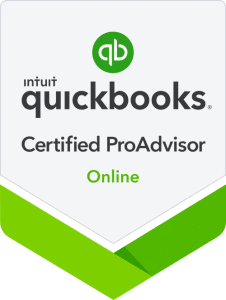Making sure your business stays on top of payroll compliance isn’t just about following the rules. It’s about protecting what you’ve built. Paying employees the right way and on time means you’re honoring their work and keeping your business in the clear. Problems with payroll can lead to major fines, legal trouble, or even unhappy workers. That’s why staying compliant matters more than most folks realize.
Payroll compliance can feel like a moving target. Tax changes pop up. Rules shift depending on your industry or where your business is located. If you’re not watching closely, even a small mistake can turn into a big headache overnight. But the good news is, this kind of risk can be avoided when you know what to look for and how to stay prepared.
Understanding Payroll Compliance
Before you can follow payroll rules, it helps to understand what they are. Payroll compliance means you’re following all the laws and regulations tied to paying your employees. This includes everything from how you calculate paychecks to how you report and pay your taxes. It also means keeping accurate records, staying current on changes in rules, and making sure you treat workers the way the law says you should.
Here are a few common payroll compliance requirements:
– Classifying employees correctly as full-time, part-time, contractor, or intern
– Withholding the right amount of federal, state, and local taxes
– Sending tax forms like W-2s or 1099s on time each year
– Keeping payroll records for a set number of years
– Following minimum wage laws and overtime requirements
One tricky part is how these rules can change depending on where your team works or what type of work they do. Some states have different tax rules or more detailed recordkeeping requirements. And if your business crosses into multiple states, keeping it all straight gets even harder. That’s why making compliance a routine check, not just a once-a-year scramble, can save time and stress.
Key Steps To Maintain Payroll Compliance
Maintaining payroll compliance isn’t about fancy tools or going back to school. It’s about paying attention to details and creating a system that works. Once that’s in place, it gets easier to keep things on track.
Here are a few steps to help manage payroll compliance more smoothly:
1. Classify workers the right way
Don’t guess if someone is an employee or contractor. Each has different tax rules, and getting it wrong can mean penalties.
2. Keep solid payroll records
Make sure you store timesheets, pay stubs, tax forms, and any adjustments made to checks. Having a clear trail protects your business and helps prove compliance if you ever get audited.
3. File and deposit taxes on time
Late payments can lead to interest charges or worse. Know your due dates and stick to them.
4. Stick to wage and hour laws
Know the state and federal minimum wage, and pay attention to break requirements and overtime rules.
5. Report new hires as required
Many states require you to notify them of new hires within a certain time frame. It helps track employment and enforce things like child support.
Even though this checklist looks simple, consistency is key. It’s not just the big mistakes that cause trouble. Forgetting a deadline or misclassifying one worker can be enough to trigger penalties. Taking the time to double-check these tasks, especially during busy seasons, can go a long way in keeping your business in the safe zone.
Common Payroll Compliance Challenges
Running a business comes with its fair share of challenges, and payroll compliance sits high on that list. While it seems straightforward, the reality can be different. Mistakes happen, but some are more common than others. Many businesses miss out on updates or changes in compliance laws that crop up now and then. This can quickly leave them in the dust with outdated practices. Then, there are those deadlines. They’re notorious for sneaking up and causing last-minute stress if you’re not prepared.
Another pitfall is managing payroll across different states. Each state can have its own set of rules, and keeping them straight can feel like learning a new language. Consistency is tricky with all these shifting variables, making it easy to slip up. When you know where the common tripwires are, you can better move around them to keep your payroll running smoothly.
So how can you dodge these hurdles? Let’s go over some practical steps:
– Regular training: Keep your team updated on the latest payroll laws and best practices
– Technology: Use reliable payroll software that helps track changes and automates tasks
– Routine audits: Regularly review your payroll processes to catch mistakes early
– Seek expert advice: When in doubt, reach out to professionals who specialize in multi-state operations
Leveraging Cloud Bookkeeping for Payroll Compliance
Managing payroll the right way isn’t something businesses have to do alone. Cloud Bookkeeping offers services that help keep your payroll operations in check. From accurate recordkeeping to staying on top of filing deadlines, our team knows how to keep things moving smoothly.
We assist with worker classification, review your system for gaps, and help get you up to speed with any new state or federal regulations. Our experience allows us to step in wherever you’re struggling, whether that’s managing tax filings or handling payroll for teams across multiple states.
Payroll compliance doesn’t need to feel like guesswork. When businesses face complex payroll needs, we offer support that’s smart, simple, and fits your workflow.
FAQs Section
1. What are the penalties for non-compliance with payroll regulations?
Ignoring payroll laws can lead to fines, interest charges, or even more serious legal trouble. The key is to fix mistakes right away once you notice them.
2. How often should payroll compliance be reviewed?
Try to review payroll compliance every few months. Regular check-ins help you stay on top of any rule changes and keep things running smoothly.
3. Can payroll software help with compliance?
Yes, good payroll software can be a huge help. It can track updates, flag problems before they grow, and keep your payroll system organized.
4. What documentation should be stored for payroll records?
Hold on to pay stubs, tax forms, timesheets, and any documents that show wage changes or adjustments. These all help prove compliance in case of an audit.
5. How do state-specific regulations impact payroll compliance?
Some states have extra rules or different timelines for things like tax filings. You’ll need to adjust your practices to meet those requirements when they apply.
How to Stay on Track Moving Forward
Sticking with payroll rules isn’t a once-and-done task. It works best when it’s part of your ongoing business process. Staying alert to regulatory changes, setting up regular payroll checks, and doing small spot audits can prevent issues before they grow.
Keeping your team trained and using good tools will carry much of the load. But when you need someone to double-check your setup or step in during busier seasons, Cloud Bookkeeping is here to help. We’re focused on making payroll compliance simpler and giving you one less thing to stress about. With the right support and habits in place, staying compliant won’t be another worry on your list.
For businesses looking to maintain strong payroll compliance, seeking expert advice can make a significant difference. At Cloud Bookkeeping, we understand the challenges that come with keeping up with changing regulations and state-specific laws. Discover how our services can help your business stay compliant by exploring our comprehensive support for payroll compliance. Let us handle the complexities so you can focus on what you do best.






